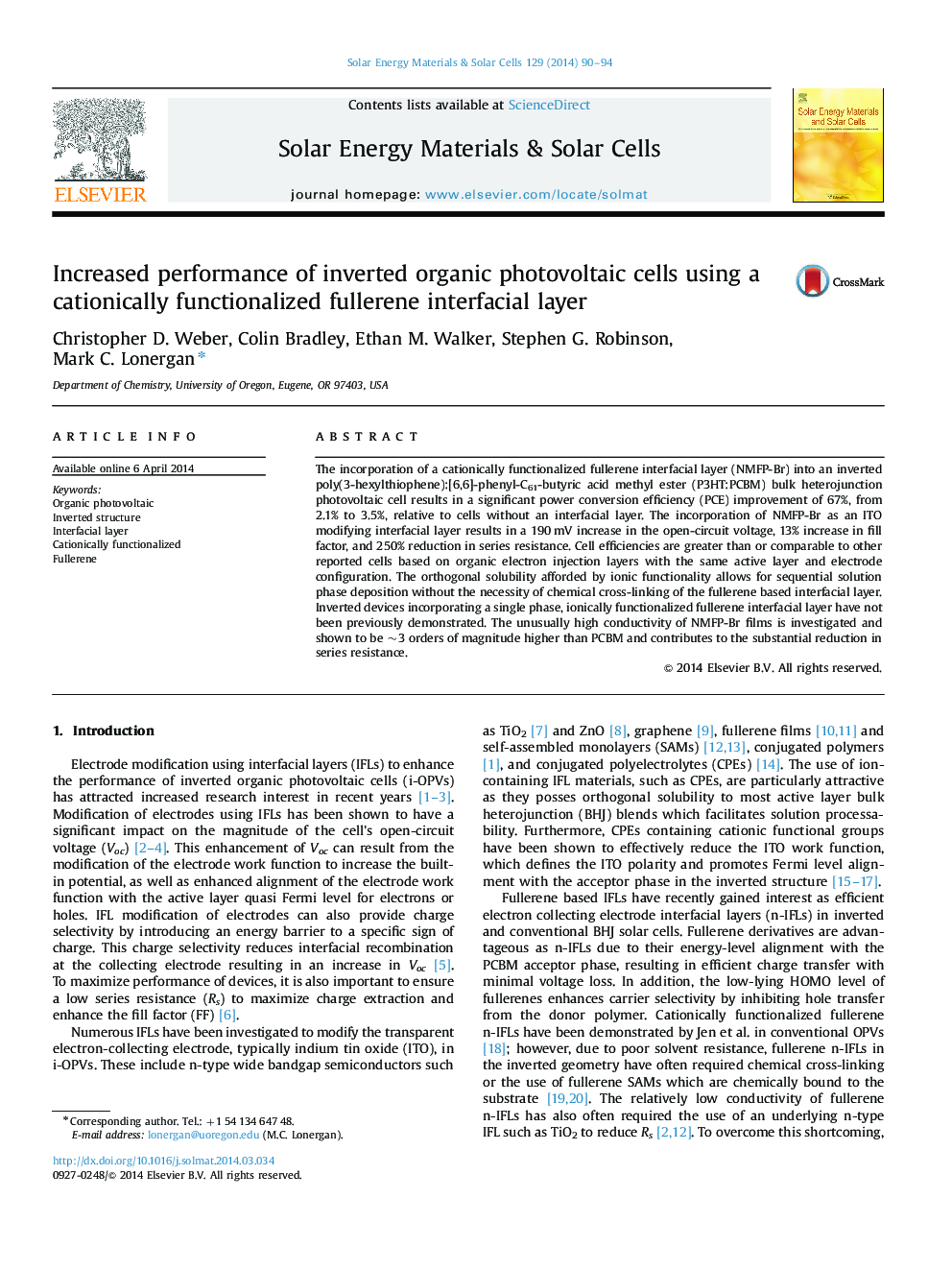| Article ID | Journal | Published Year | Pages | File Type |
|---|---|---|---|---|
| 78034 | Solar Energy Materials and Solar Cells | 2014 | 5 Pages |
•Inverted OPV with a cationic fullerene electron injection layer (NMFP-Br).•NMFP-Br enhances PCE by 67% from 2.1% to 3.5%.•NMFP-Br increases Voc by up to 200 mV relative to control.•NMFP-Br possesses adequate solvent resistance to facilitate solution processing.•NMFP-Br films display ~3 orders of magnitude higher conductivity than PCBM.
The incorporation of a cationically functionalized fullerene interfacial layer (NMFP-Br) into an inverted poly(3-hexylthiophene):[6,6]-phenyl-C61-butyric acid methyl ester (P3HT:PCBM) bulk heterojunction photovoltaic cell results in a significant power conversion efficiency (PCE) improvement of 67%, from 2.1% to 3.5%, relative to cells without an interfacial layer. The incorporation of NMFP-Br as an ITO modifying interfacial layer results in a 190 mV increase in the open-circuit voltage, 13% increase in fill factor, and 250% reduction in series resistance. Cell efficiencies are greater than or comparable to other reported cells based on organic electron injection layers with the same active layer and electrode configuration. The orthogonal solubility afforded by ionic functionality allows for sequential solution phase deposition without the necessity of chemical cross-linking of the fullerene based interfacial layer. Inverted devices incorporating a single phase, ionically functionalized fullerene interfacial layer have not been previously demonstrated. The unusually high conductivity of NMFP-Br films is investigated and shown to be ~3 orders of magnitude higher than PCBM and contributes to the substantial reduction in series resistance.
